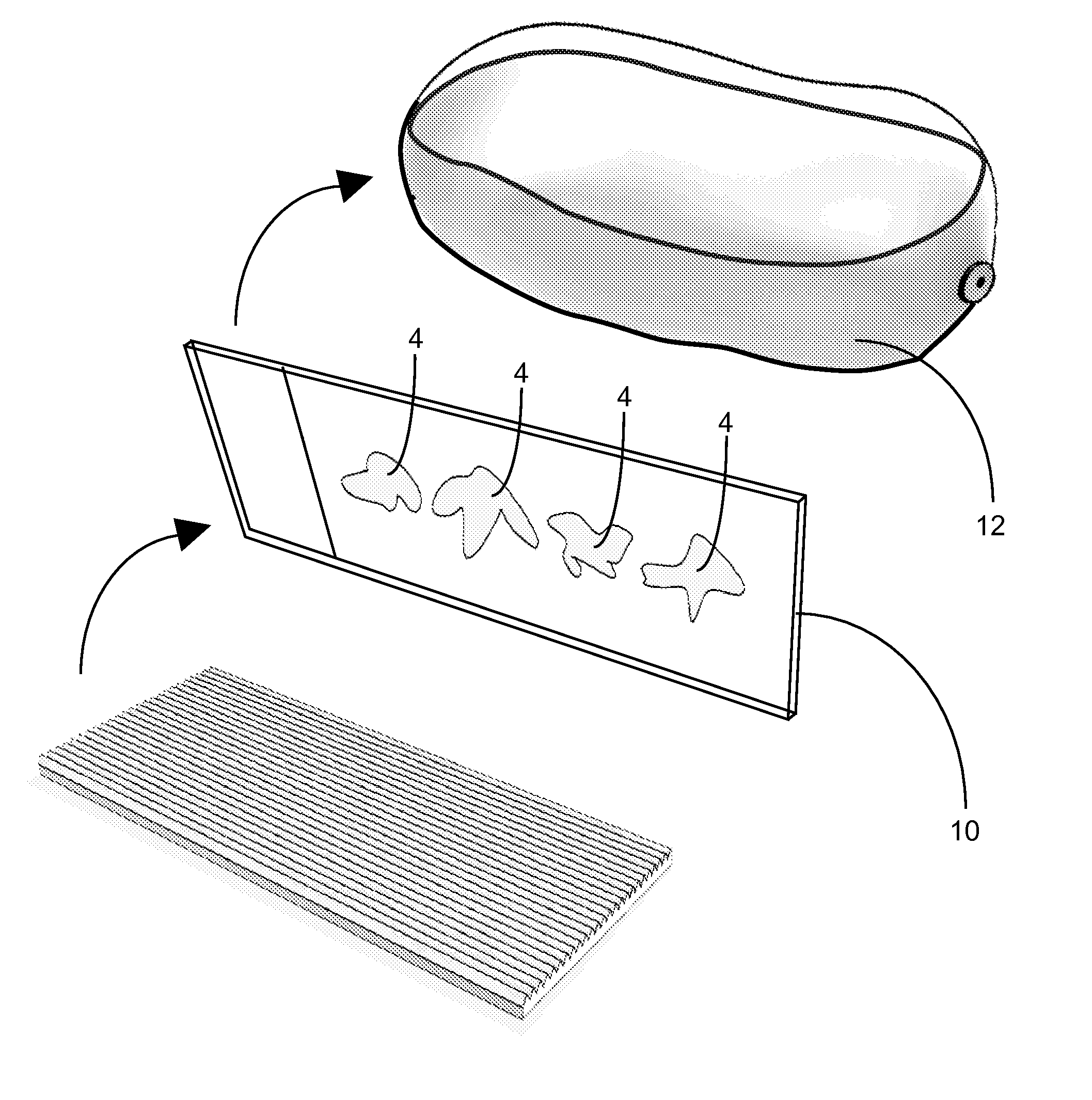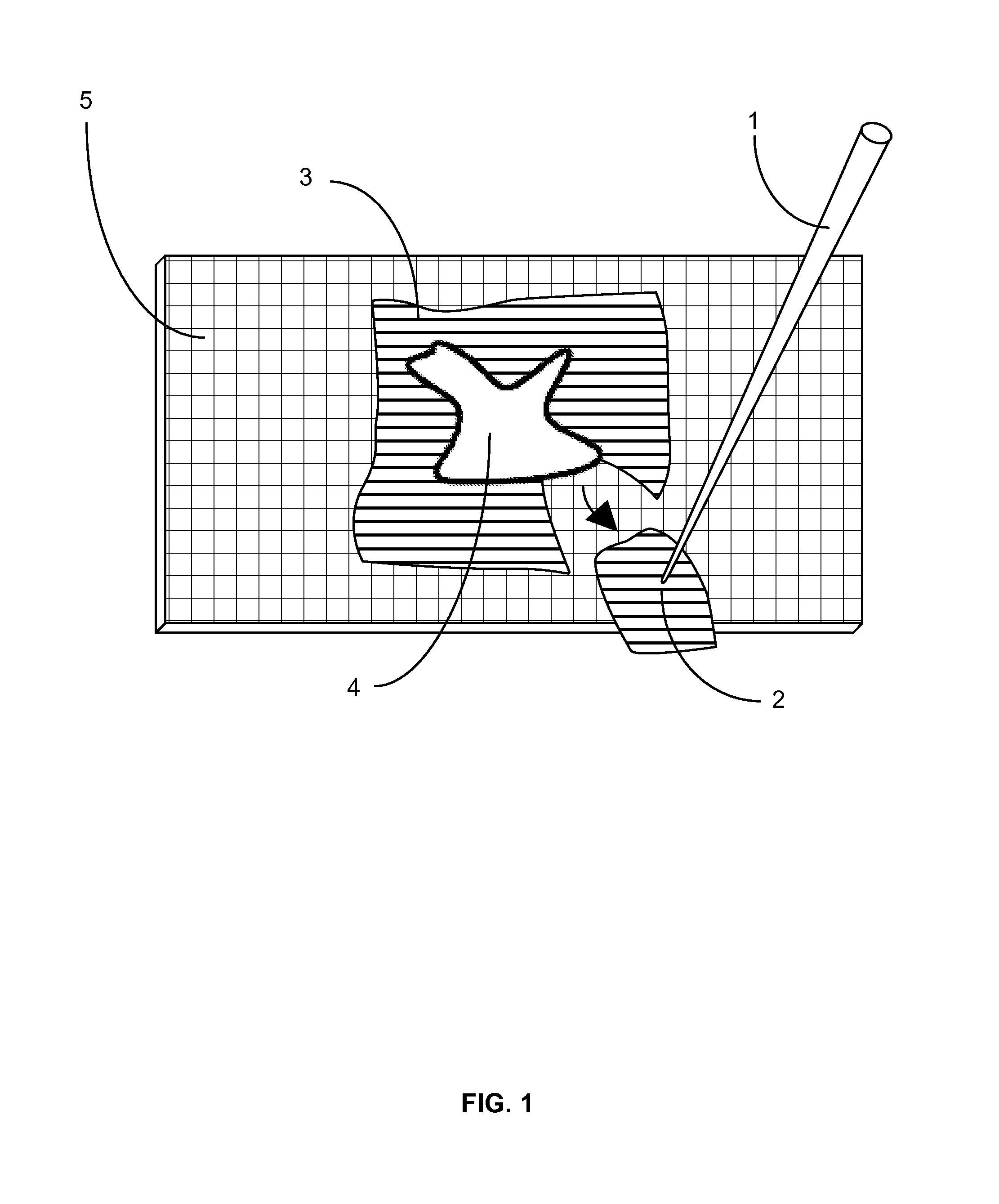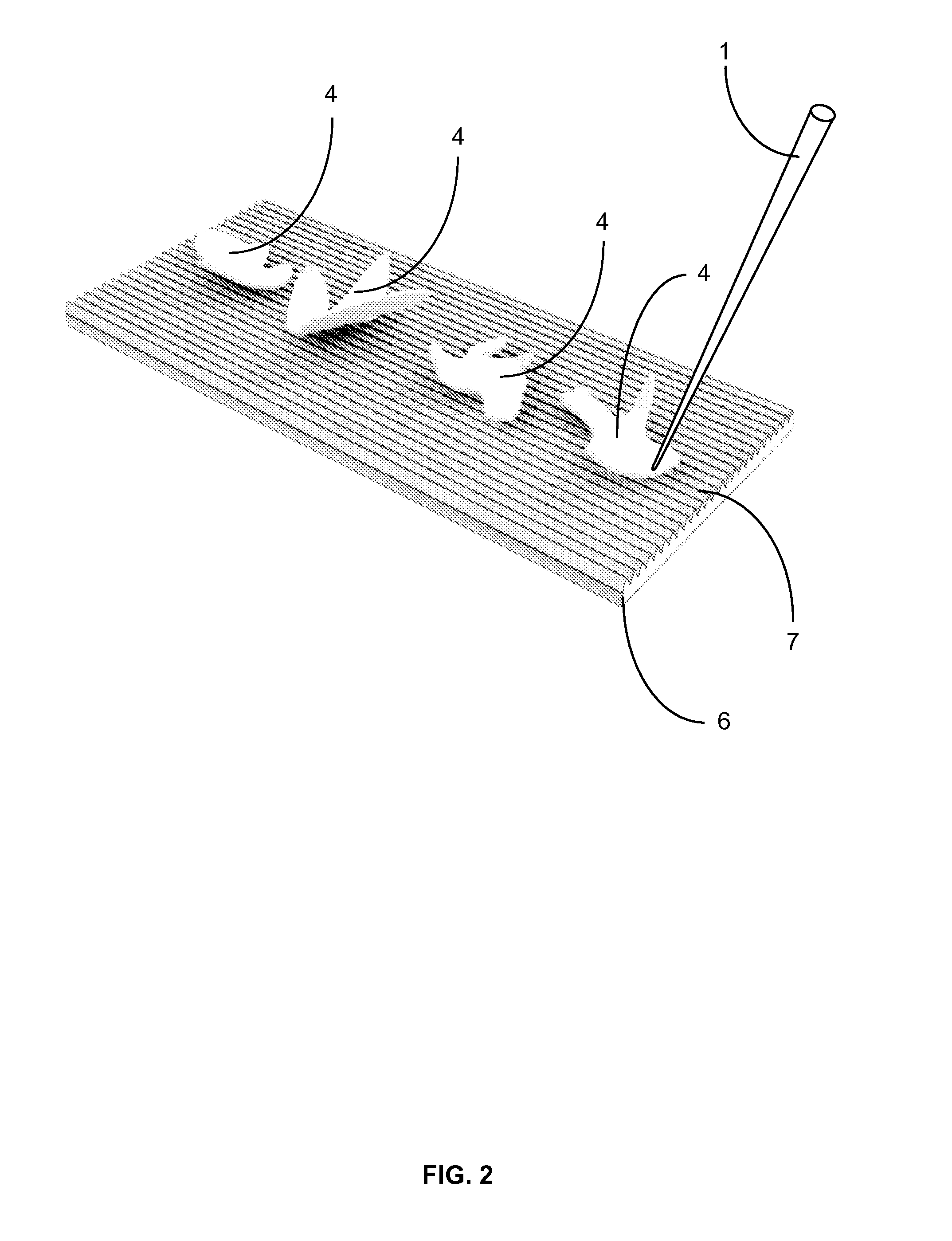Apparatus and method for affixing frozen tissue sections to glass or membrane microscope slides
a microscope slide and tissue technology, applied in the field of molecular biology and microbiology, can solve the problems of tissue section improper folding onto the slide, many problems, and the learning curve of the method is too high to achieve the effect of properly performing the method without tissue section folding, reducing the need for reagents, and increasing economic efficiency in the laboratory
- Summary
- Abstract
- Description
- Claims
- Application Information
AI Technical Summary
Benefits of technology
Problems solved by technology
Method used
Image
Examples
Embodiment Construction
[0023]The function of this apparatus is to affix frozen tissue sections to glass or membrane microscope slides. The apparatus contains several parts; teasing implement(s) for removing the tissue section from the surrounding embedding medium, an affixing block with one or more affixing surfaces which enables the sections to be flattened and transferred to the slide and a heating element which induces transference of the section from the affixing block to the slide.
[0024]First, after cutting each tissue section, an individual first removes the surrounding embedding medium from the tissue section (FIG. 1). This is done inside the cryostat and with temperature-equilibrated teasing implement(s). The teasing implement (FIG. 1; 1) is small enough to be easily manipulated by hand and has a pointed tip (FIG. 1; 2) so that the surrounding embedding medium (FIG. 1; 3) can be removed from the tissue section (FIG. 1; 4) on a nominal surface (FIG. 1; 5), which provides support, inside the cryosta...
PUM
 Login to View More
Login to View More Abstract
Description
Claims
Application Information
 Login to View More
Login to View More - R&D
- Intellectual Property
- Life Sciences
- Materials
- Tech Scout
- Unparalleled Data Quality
- Higher Quality Content
- 60% Fewer Hallucinations
Browse by: Latest US Patents, China's latest patents, Technical Efficacy Thesaurus, Application Domain, Technology Topic, Popular Technical Reports.
© 2025 PatSnap. All rights reserved.Legal|Privacy policy|Modern Slavery Act Transparency Statement|Sitemap|About US| Contact US: help@patsnap.com



